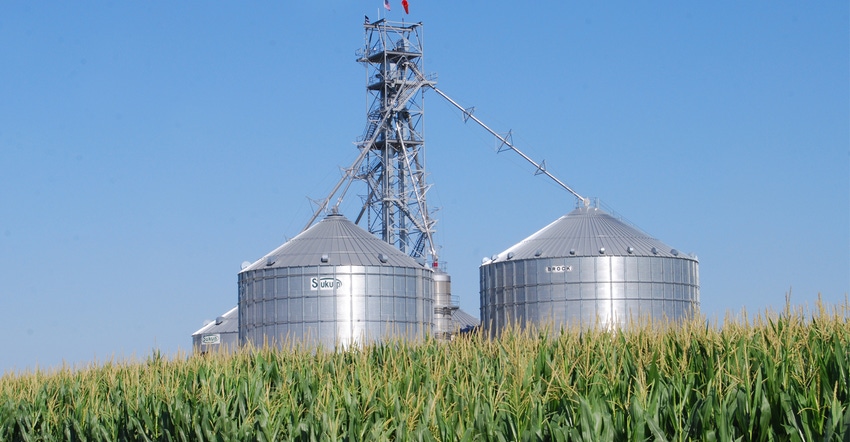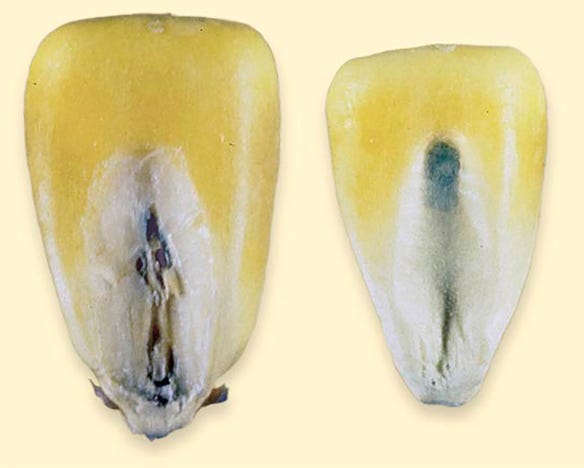August 1, 2017

Due to a combination of temperature and humidity last fall at harvest, farmers need to be aware of the high risk of blue eye, a fungus that grows on corn kernels. It’s now showing up on some of the 2016 corn crop stored in bins.
Blue eye mold appears as a blue line down the middle of a corn kernel, where the germ is located. The fungus invades the kernel and feeds on the high-fat oil located in the germ. There is no way to get rid of blue eye mold, but there are ways to control its spread.
Carbon dioxide monitoring is one way to observe corn conditions in bins. However, blue eye mold does not grow at a fast enough to give off a detectable amount of heat.
Don’t aerate corn when air is humid
“Aerating the corn with humid air, like what the state of Iowa has been experiencing recently, will make the mold grow,” says Charles Hurburgh, grain quality and handling specialist with Iowa State University Extension. “If the dew points get down to the 40s and 50s relative humidity, then aeration fans should be run. Additionally, keep in mind the grain that is still cold from last winter should not be warmed.”

MOLD GROWTH: Blue eye mold appears as a blue line down the middle of a corn kernel.

Although feed mills and ethanol plants can use the moldier corn, blue eye kernels are graded as damaged. If feeding it to animals, Hurburgh says to mix it with sound “non-moldy” corn at a reasonable amount for the species consuming it.
An elevator will purchase blue eye kernels and count them as damaged. Typically, the grading limit on No. 2 yellow corn has a maximum of 5% damaged kernels.
Keep eye on corn now in storage
Ethanol plants may buy corn affected by blue eye mold, although they prefer not to buy it as the risk for having a fermentation problem is higher. The fermentation may not be as clean because the mold interferes with the yeast. Also, fermenters can get stuck, requiring corrective antibiotic use.
“With a 2 billion-bushel corn surplus for this year, some of this corn that is already in storage is going to last into 2018. Ideally, this fall you should sell the old corn and replace it with the new crop in your storage bins,” advises Hurburgh.
For more information about the Iowa Grain Quality Initiative and resources for managing stored grain, visit iowagrain.org. The initiative’s mission is to create knowledge and provide information to improve the efficiency of traditional commodity grain markets and assist emerging markets for user-specific grains.
Source: Iowa State University
You May Also Like




